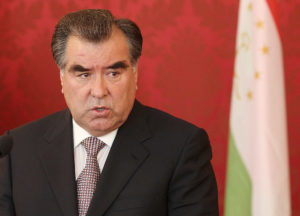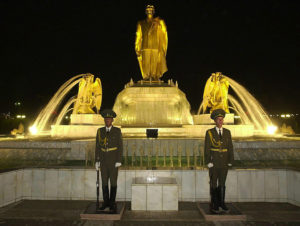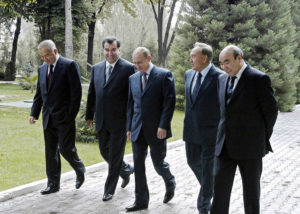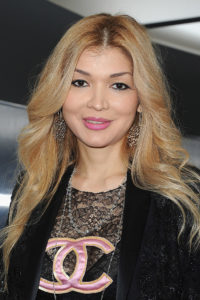Donald Trump as Adolf Hitler. Credit: Ben Stansall /AFP via Getty Images
As we all know, Donald Trump is a grand scrambler of brains, with a gift for bringing out the worst in his opponents. He pulls them into the mud with him, makes them stupider, causes them to lose all sense of perspective, to retreat into conspiratorial fantasies. Generally he makes them behave in a manner unlikely to help them achieve their main goal, which is to get rid of him.
He also serves as a strange, unflattering mirror, revealing things about his foes by the manner in which they respond to his provocations. And one fact he has revealed over and over again, is that they don’t know much about history, and especially not about the history of dictators.
Confronted with his bullying personality, violations of democratic norms and whimsical-autocratic manner, they compare him time and time again to a dictator. For some, he’s Hitler (thank you Michael Moore, Alastair Campbell, Linda Ronstadt), while those who have read two books might plump for Mussolini, thus demonstrating their sophistication.
But these comparisons are feeble, and unpersuasive: for all his flaws, Trump is not a genocidal maniac in the mould of Hitler, and I doubt he could sustain his concentration long enough to read The Protocols of the Elders of Zion. As for Mussolini, he may look like a blustering buffoon in old newsreels, but at the time he managed to win endorsements from Gandhi and Churchill. I don’t think Trump could pull that off.
No; if Trump’s foes really want to make the case that he is some kind of dictator in waiting, I suggest they try a little harder. After all, the last 100 years or so left us with so many variations to choose from; everything from ultra-boring professors of economics to despots with a taste for human flesh.
But you don’t need to dig that deep; in fact, you don’t even need to open a history book. Since the collapse of the USSR, a group of dictators in Central Asia have been ruling by whim, crushing dissent, building cults of personality, and even, on occasion, marrying women from eastern Europe.
So could these contemporary Khans be just the dictators Trump’s enemies are searching for as a point of comparison? Let’s consider the evidence.
1. They have strange hair cuts
Much has been made of Trump’s weird comb-forward/over, and it is indeed easy to mock — a little too easy, perhaps. Yet the 45th president of the United States is not alone as a world leader rocking a weird ‘do. Saparmurat Niyazov, the dictator of Turkmenistan from independence until his death in 2006 was no slouch in this department either.
When I visited Turkmenistan a few months before the dictator dropped dead of a heart attack, I was struck by the difference between the image of Niyazov on the currency — a distinguished looking older gentleman whose head was topped with a healthy mane of grey hair —and the sweaty slab of fat that appeared on TV, the northernmost extremity of which was crowned with an ink-black Brillo pad.

Meanwhile, Emomali Rahmon, the dictator of Tajikistan, went through a period during which his hair was sculpted into a set of black wings that adorned either side of his head. In recent years however he has shown a greater willingness to let age run its course, although the same cannot be said for free elections, alas.
2. They love grandiose construction projects
Trump was for most of his career a developer of luxury real estate; he likes building things; the bigger and flashier the better. He now seems ready to turn his attention to government buildings. A proposed executive order, with the magnificently trolling title of “Making Federal Buildings Beautiful Again” stipulates that “the classical architectural style shall be the preferred and default style” of all future federal buildings.

Needless to say, The Guardian was quick to publish a piece featuring dire mutterings about Albert Speer and Mussolini, but it should be noted that Central Asian dictators are also very keen on building things. Niyazov tore down much of the cheapo brutalist late-Soviet architecture in Ashgabat, the Turkmen capital, replacing it with monumental marble clad columns and domes in a hybrid neoclassical-Ottoman style. Meanwhile Nursultan Nazarbayev, the erstwhile president of Kazakhstan (today he glories in the title of “Leader of the Nation”) built himself an entirely new capital in the steppe. It used to be called Astana, now it bears his name, Nur-Sultan, and its streets ascend to Las Vegas levels of gaudiness that would give Trump at his most Trumpian a run for his money.
3. They are ideologically flexible
Trump’s political positions have changed over the years. In the 1980s he was a Republican, then he was a member of something called “The Independence Party of New York”, then he was a Democrat, then he was a Republican, then he was “an independent” for a bit, before finally becoming a Republican again in 2012. He is often held up to ridicule for this, but among Central Asian dictators this level of ideological flexibility is absolutely normal.

This is especially true of the first generation, who had all held positions of power in the USSR before it collapsed and were dialectical-materialist defenders of the party line, cold warriors and Moscow loyalists 4 evah until all of a sudden they weren’t. Come independence, Islam Karimov of Uzbekistan found himself espousing a variant of “Third Way” politics, much like Tony Blair only with added torture; Nazerbayev threw away his nukes and started rambling on about world peace; Niyazov invented a fairytale about Turkmen history in his notorious Ruhnama and declared himself “Turkmenbashi”, father of the nation.
Emomali Rahmon, meanwhile, resurrected the prophet Zoroaster as a model man to be emulated by all Tajiks. And just as Trump, shall we say, lacks sincerity when he speaks to evangelicals, so the dictators of Central Asia pay lip service to Islam, while never letting it stop them from doing as they please; in Niyazov’s case that included selling bottles of vodka with his face on them.
4. They give peace a chance
Trump, unlike many US presidents, is highly reluctant to get his war on. Consider Reagan, for example: he pursued skullduggery in Latin America, dropped bombs on Libya, fought a Cold War with the USSR and attempted to put weapons in Outer Space. Bush Sr. had actually flown fighter planes in World War II and launched Gulf War I while in office; Bush Jr. dodged military service but made up for it by giving lots of other people a chance to fight in Iraq and Afghanistan.
Bill Clinton intervened in the Balkan wars of the 90s, and during the Kosovo conflict he ignored the United Nations and ordered a bombing campaign against Serbia that targeted factories, TV stations and other parts of the civilian infrastructure. And of course, Obama famously “led from behind” in Libya, helping transform Gaddafi’s cruel dictatorship into the model of democracy that it is today.
Trump, on the other hand, shot a few rockets at nothing very much when pressed to intervene in Syria, and the second Islamic State was on the ropes he rushed to withdraw from the region. Central Asian dictators, likewise, are determinedly isolationist and averse to any kind of foreign adventurism. Niyazov even adopted a policy of “eternal neutrality” for Turkmenistan, which was officially recognized by the UN. His successor, Gurbanguly Berdymukhamedov, has maintained this stance, and refusing to get involved in other people’s wars has left him time to pursue a parallel career as a DJ and producer in a pop duo alongside his grandson, surely demonstrating the wisdom of the policy.

5. They are very fond of their daughters
Much has been made of Trump’s decision to appoint his eldest daughter Ivanka as a senior adviser in 2017, a position she holds to this day. Indeed, although Trump has five children, it does seem that Ivanka occupies a special place in his heart, as she has also served as an executive vice president of The Trump Organization and appeared on The Apprentice, her dad’s reality TV show. Central Asia also has a number of high-profile presidential daughters, despite the traditionally male-dominated culture in the region.

The most notorious of these is Gulnara Karimova, eldest daughter of Islam Karimov, who enjoyed a charmed life as a pop singer, diplomat and “businesswoman” and even hung out with the noted lute-player Sting — until her sudden fall from grace in 2013, when she was placed under house arrest, reportedly on the orders of her strongman father. In Kazakhstan, however, another presidential daughter has enjoyed a steady climb towards power; Dariga Nazerbayev is strongly tipped to succeed her father as president in this year’s election.
So there you have it; Trump isn’t Hitler, or even Mussolini. He’s a Central Asian dictator. The evidence is overwhelming, no? Well OK; there are still some differences. For instance, while Trump may hurt American journalists’ feelings, he refrains from actual torture; and although Trump may call protestors rude names, Islam Karimov actually gunned them down.
Now that I think about it, there’s another, even more important difference. Trump is not just erratic; he’s completely undisciplined, and careens from one crisis to the next. Dictators like stability, and successful dictatorships demand it; thus, if Trump was a dictator, Central Asian or otherwise, he would have been removed in a coup d’etat long ago.
And so it seems that we not only have democracy to thank for Trump’s election, we also have it to thank for him sticking around. Amen, brothers and sisters, amen.









Join the discussion
Join like minded readers that support our journalism by becoming a paid subscriber
To join the discussion in the comments, become a paid subscriber.
Join like minded readers that support our journalism, read unlimited articles and enjoy other subscriber-only benefits.
SubscribeTrump is not doing anything to his oponents but revealing who they really are. I am no fan of Donald Trump the man. I am a fan of what his policies have delivered to the forgotten middle class of America. Hope, dignity and more prosperity than the last 3 Presidents combined in 3.5 years. (Combined increase to median middle class incomes in last 24 years = 7.8%, Trump = 10.9%)People ultimately are not what they say but what they do. President Trump could not be a Man of the People because he was born into wealth and privilage, but over time he has proven himself to be a Man for the People.